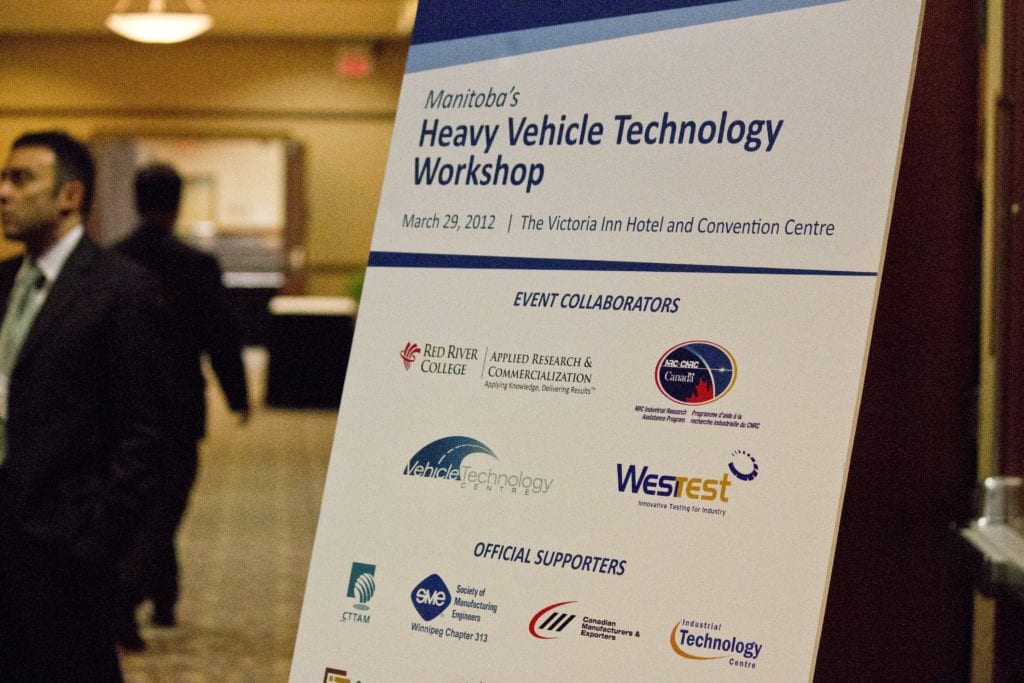Recap: March 29 Heavy Vehicle Technology Workshop
A packed room of over 60 people – including stakeholders from all corners of the Manitoba  transportation sector – was on hand this past Thursday, March 29 for the Heavy Vehicle Technology Workshop at the Victoria Inn in Winnipeg, Manitoba.
transportation sector – was on hand this past Thursday, March 29 for the Heavy Vehicle Technology Workshop at the Victoria Inn in Winnipeg, Manitoba.
Applied Research & Commercialization (AR&C), in collaboration with the National Research Council Canada Industrial Research Assistance Program (NRC-IRAP), WESTEST, and the Vehicle Technology Centre, created the daylong workshop, which shared the latest in heavy vehicle design and manufacturing available to industry.
From breakthrough GPS-guiding technology in snowplows to light-weighting vehicles with hybrid composite technology, our speakers treated attendees to a diverse set of informative and entertaining presentations. And the audience gave back too, with each presentation sparking discussions that showed a clear interest in the future of the heavy vehicle industry in Manitoba and beyond. These questions spilled over to some valuable networking time, where guests connected and shared ideas.
We’d like to thank all speakers, delegates, and official supporters for helping make the workshop a success. We’ll be making presentations from the workshop available online soon. In the meantime, please check out our event website for speaker bios and session descriptions.
Photos from the event are below:











